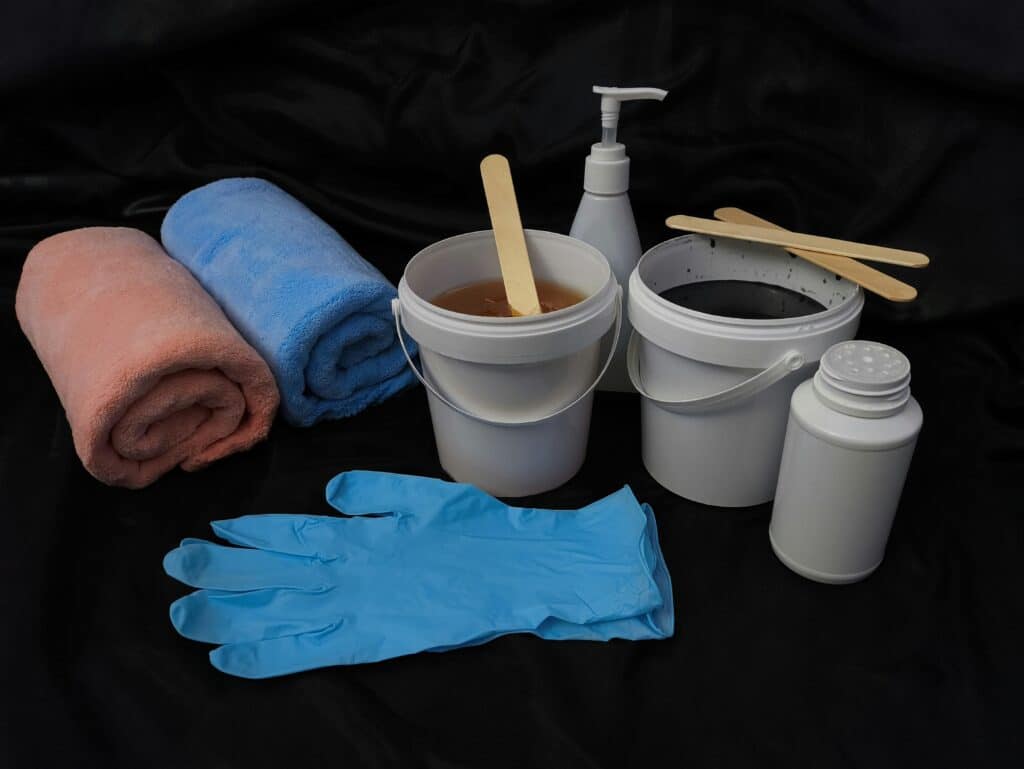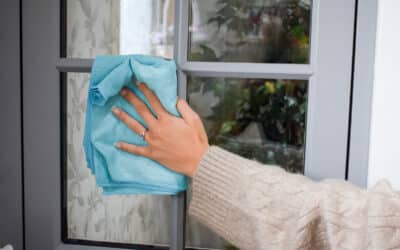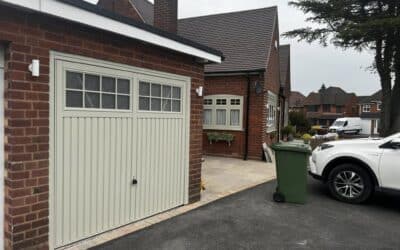UPVC frames and fixtures are designed to be low maintenance, but regular cleaning is still essential to keep them looking fresh and prevent long-term staining or discolouration. Whether it’s your window frames, doors, garage doors or soffits and fascias, cleaning UPVC the right way can extend its lifespan and maintain your home’s kerb appeal. In this article, we will explore the best methods for safely and effectively cleaning your UPVC frames and fixtures, without causing damage to the surface or any paint which has been applied.

Why proper cleaning matters for UPVC
While UPVC is a tough material, it’s not invincible. Using harsh chemicals or abrasive tools can scratch the surface, strip protective layers or even speed up the yellowing process – every homeowner’s worst nightmare. Proper cleaning preserves both the appearance and integrity of your UPVC fixtures. Plus, keeping UPVC clean prevents grime from embedding in the material, which is especially important for older installations.
To clean UPVC safely and effectively, we recommend gathering the following tools and materials:
- A soft cloth or microfibre cloth
- Non-abrasive sponge
- Mild detergent (washing-up liquid works well)
- A spray bottle with warm water
- A soft brush for crevices
- Dry towel for drying after rinsing
Avoid any scouring pads, bleach-based cleaners or strong solvents, as these can damage the surface or leave streaks.
How to clean UPVC window frames
Start by brushing off any loose debris or dust with a dry cloth or soft brush. Then spray your cleaning solution – a mix of warm water and a few drops of mild detergent – onto the UPVC frame. Use a soft sponge to gently wipe the surface, paying attention to corners where dirt collects. For stubborn marks, use a soft brush and a bit more pressure, but never scrub with anything abrasive.
Rinse thoroughly with clean water and dry the frame with a towel to prevent water spots. Aim to clean your UPVC windows every few months or more frequently if your property is in a high-pollution area.
How to clean inside your UPVC window frames
Internal window frames can suffer from condensation-related grime and dust buildup. Use a damp cloth with a mild detergent solution and gently clean all around the inner frame, including the corners and seals. It’s a good idea to open the windows and clean the hinge areas too, as these can harbour trapped debris.
Avoid soaking the seals and be cautious not to damage them – a light wipe is enough. Dry off any remaining moisture to prevent mildew.
How to clean UPVC doors
UPVC doors tend to accumulate marks from fingerprints, pets and the elements. The cleaning method is similar to windows – use a soft cloth and mild solution, working your way from top to bottom. Pay extra attention to handle areas and door edges. Hardware like handles and letterboxes can be wiped with a damp cloth but avoid letting moisture seep into locks or hinges.
How to clean UPVC garage doors
Your garage doors can be subject to a lot more environmental build-up – such as road dust, bird droppings and oil stains. Start with a rinse using a hose to remove surface dirt. Then apply your cleaning solution with a sponge, working in manageable sections. Use a soft brush to loosen any ingrained dirt and rinse thoroughly before drying with a cloth or letting it air dry.
How to clean fascias, soffits and guttering
These areas are often neglected due to difficulty accessing them, but they can make a big difference to the look of your home. If it’s safe to do so, use a ladder and long-handled soft brush to clear away moss and dirt. Then clean using your usual mild solution, rinsing well afterwards. If the staining is heavy or the area is hard to access, consider calling in a professional.

Best cleaning products for UPVC
There are several UPVC-safe cleaners available on the market. Look for non-acidic, non-bleach formulas designed specifically for plastics. Products like Cream Cleaner for UPVC or dedicated UPVC Restorer solutions can work well. For DIY alternatives, a mix of white vinegar and warm water can be effective on grime – just remember to rinse thoroughly as vinegar’s acidity can potentially cause etching or dullness if left on the surface for extended periods. It’s always a good idea to test any cleaning solution on an inconspicuous area first to ensure it won’t cause discolouration or damage to your specific UPVC finish.
Mistakes to avoid
Never use a wire brush or scouring pad – These abrasive tools can scratch and score the UPVC surface, creating permanent damage that dulls the finish and provides grooves where dirt can accumulate more easily in future.
Don’t use bleach or solvent-based cleaners – Bleach and harsh solvents can cause chemical damage to UPVC, leading to discolouration, surface degradation, or even structural weakening of the material over time.
Avoid leaving cleaning product residue behind – Thorough rinsing is essential as leftover cleaning products can attract dirt, cause streaking, or create a film that makes the surface appear cloudy or discoloured.
Don’t forget to dry the surface to prevent water marks – Using a clean, lint-free cloth or chamois to dry UPVC after cleaning prevents mineral deposits from hard water creating unsightly spots and maintains that pristine, streak-free appearance.
How often should you clean UPVC?
As a general rule, establishing a regular cleaning schedule based on exposure and usage will keep your UPVC looking its best while preventing the buildup of stubborn stains that require more intensive treatment:
- Windows and doors: every 2 – 3 months
- Garage doors: quarterly
- Fascias and soffits: every 6 – 12 months
- Guttering: annually or as needed
Conclusion
Keeping your UPVC clean doesn’t require fancy products or intensive effort – just a gentle, regular approach with the right tools. From window frames to doors and guttering, these methods ensure your UPVC fixtures stay looking smart and perform well for years. And when cleaning isn’t enough, respraying can offer a fresh lease of life. For help transforming your tired UPVC, get in contact with a professional like our team here at Spray Vue for expert spraying solutions tailored to your property.



0 Comments